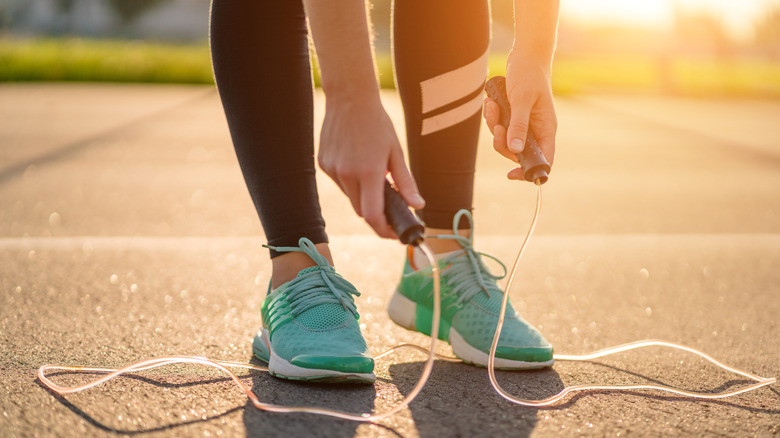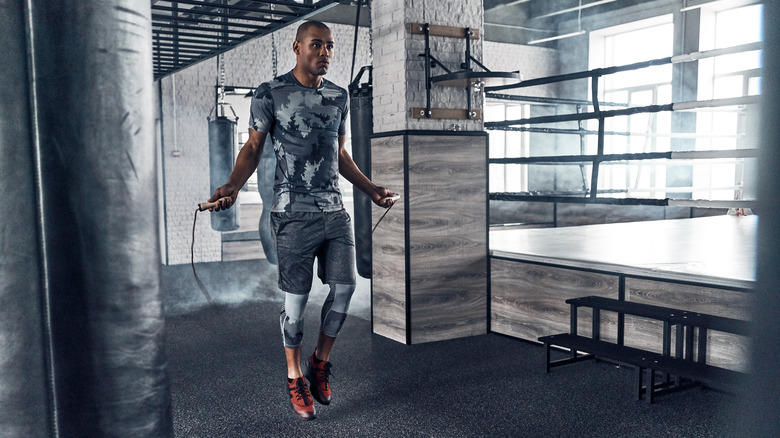The Unexpected Way Jumping Rope Can Affect Your Knees
If you think jumping rope is nothing but a silly school playground activity of years gone by, think again. There are many different creative techniques — from Side Swing to Leg Over to Double Dutch — that get the heart racing and are popularly performed in competition (via Top End Sports). And more than just plain fun, rope jumping is a fast-paced way to condition the body, train for speed and agility, and act as a warm-up or cool-down before or after weight training (via SELF).
As a cardiovascular exercise, hopping cables burns lots of calories and is great for the heart and lungs, helping to prevent weight gain, high blood pressure, and diabetes, according to Women's Health. Plus, this fun activity improves coordination and balance, builds shoulder strength, and helps maintain bone density. With all that skipping, it's easy to believe that jumping rope could put you at risk of injuring the feet, legs, and knees — common areas of injury among runners logging miles pounding the pavement (per Healthline). "Avoid jumping rope on super hard surfaces like concrete or asphalt, as those can be hard on your joints," certified personal trainer Kollins Ezekh tells SELF.
When you take preventative measures, rope jumping actually can help guard against knee injuries from other exercises and activities.
Proper form for the win
According to The Jump Rope Coach Chris, rope jumping with proper form is not bad for the knees, and can be a great way to improve your posture and increase the bone density in your legs. Jumping rope works by strengthening the muscles in our ankles, feet, and knees, according to Aaptiv. In strengthening those muscles, it gives us a healthy jumping off point — so to speak. By starting off with strong muscles in the first place, we help prevent exercise-related knee injuries. In fact, some rehabilitation centers use jumping rope as an exercise to help patients rebuild muscle tissue.
However, if you find you are experiencing knee pain while jumping rope, Jump Rope Coach Chris says it is likely due to improper technique — and a few quick adjustments will get you right back on track. When slamming our feet roughly into the ground, we place additional impact on our knees and joints. By keeping our jumps relaxed, we alleviate the strain from impact. You'll also want to be mindful of the surface on which you are jumping. Avoid harsh surfaces such as asphalt or concrete, as well as those that are overly soft such as sand or grass (via SELF). Your best bet is to stick to a mat, wood, or gym floor. Once you've corrected your form, jumping rope has only good things to offer for your health and wellness.


